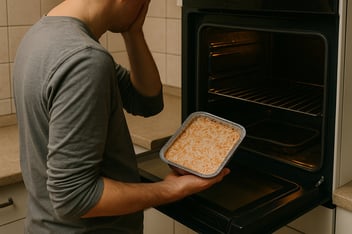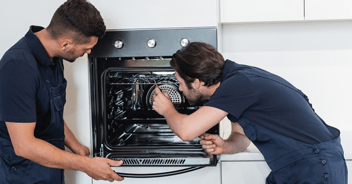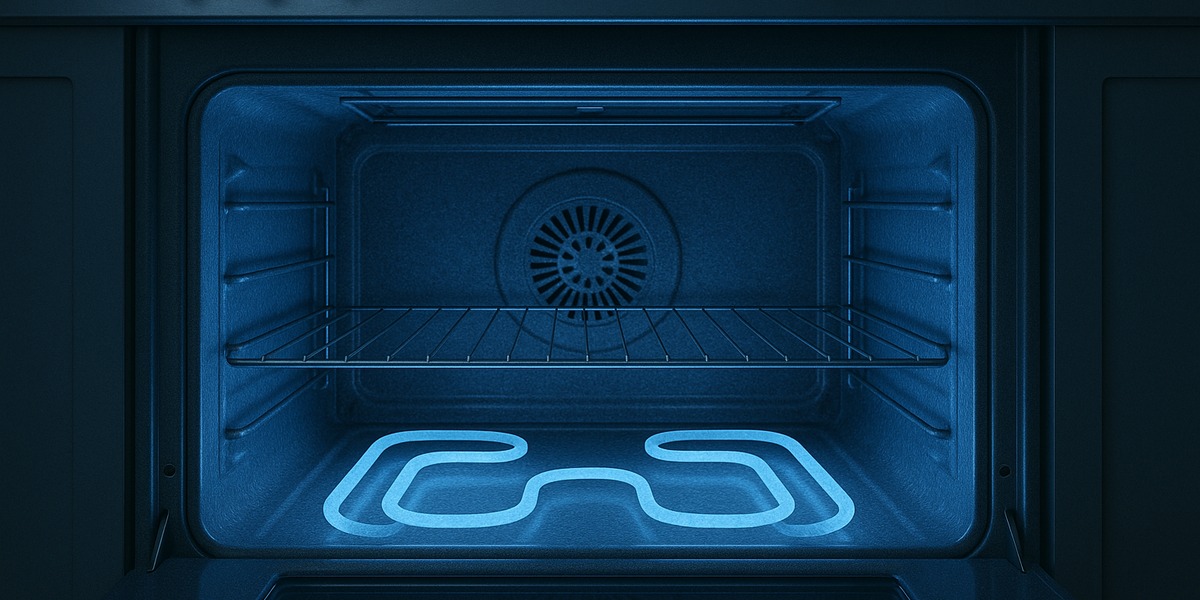
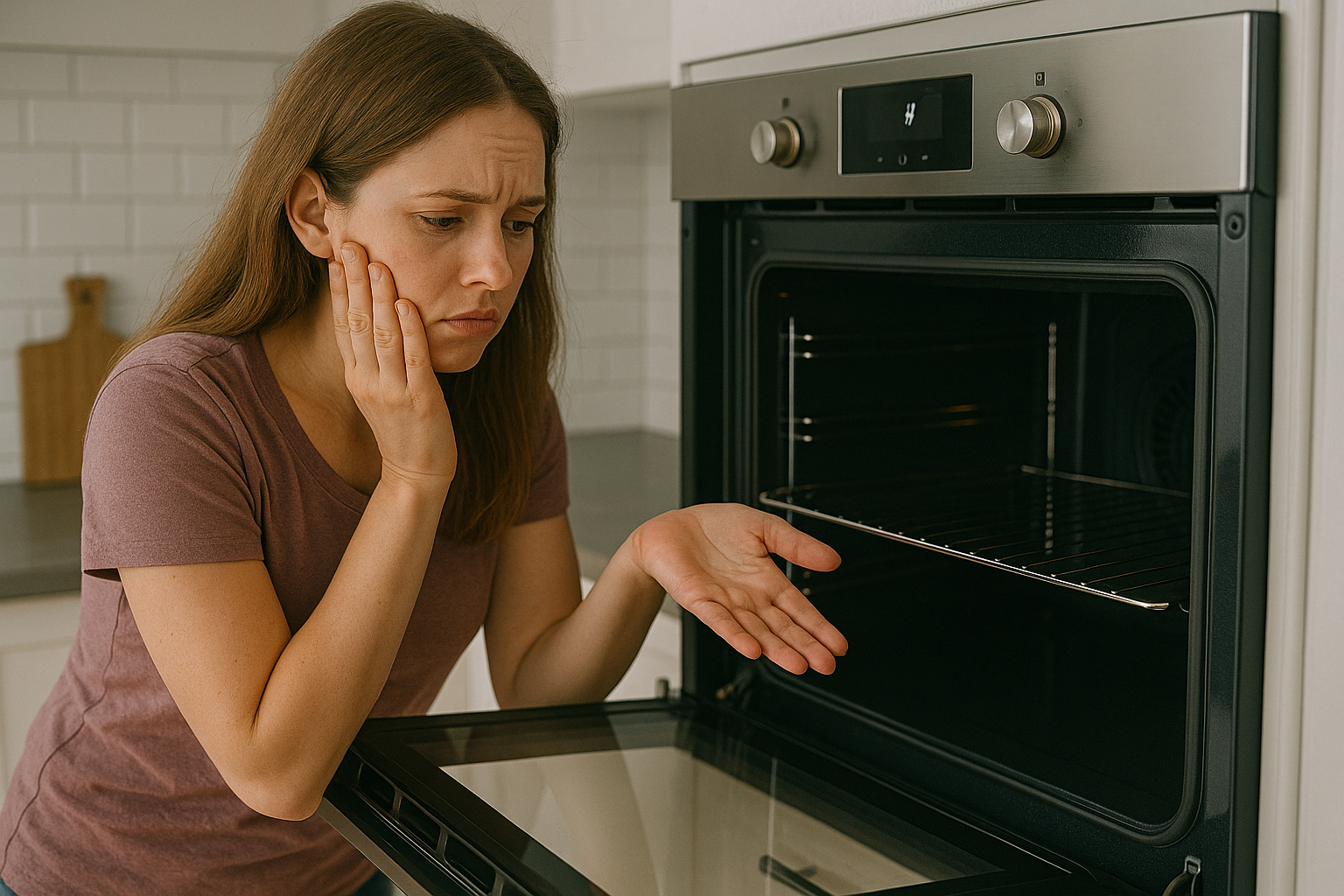
Why Your Oven Isn’t Heating Properly (And What It Really Means)
When your oven refuses to heat the way it should, meal prep turns into guesswork. One moment you’re waiting for preheat that never finishes, the next you’re pulling out food that’s undercooked or unevenly baked. While it’s tempting to chalk this up to “wear and tear,” heating issues usually stem from electrical or mechanical faults hiding beneath the surface. And those small faults, if ignored, can escalate into serious safety concerns.
At UpFix, we specialize in uncovering these hidden problems and restoring ovens to full working order. Our IPC-Certified repair team handles everything from damaged heating elements to overloaded circuits, ensuring your kitchen stays both safe and reliable. In this article, we’ll break down the main reasons ovens lose heating power, explain how performance is affected, and outline how our experts approach long-term solutions.
How Power Interruptions Disrupt Heating
An oven is essentially a high-powered electrical heater. To generate the high, steady temperatures needed for cooking, it depends on uninterrupted current. The moment that current is cut—whether by a failing part, wiring fault, or circuit overload—heating suffers. Sometimes the oven shuts down entirely, but in many cases the damage is subtler: sluggish preheating, uneven cooking, or temperatures that refuse to stay consistent.
Electrical protection systems like circuit breakers are designed to cut power when something goes wrong. But every trip or flicker of interruption leaves a mark, stressing the oven’s components and reducing performance over time. If your oven can’t seem to “hold the heat,” there’s almost always a root cause in the power delivery system.
Don’t wait for small interruptions to turn into major failures — schedule an inspection with UpFix today.
Leading Causes of Heating Problems
1. Worn-Out Heating Elements
Bake and broil elements are the backbone of your oven. When they weaken, crack, or short out, your oven can’t generate proper heat. A failing element may still glow faintly but won’t reach full power, leading to food that cooks unevenly or takes far longer than expected. In worse cases, a burnt-out element can trigger breaker trips or even sparks. Replacing the element is usually the cure, but testing is key—what looks fine on the surface may still be failing electrically.
2. Loose or Damaged Wiring
Inside every oven is a network of wires and terminals that deliver electricity from the power source to the heating components. Over years of exposure to high current and heat, these wires can loosen, burn, or fray. When that happens, power doesn’t flow where it should, leaving the oven underpowered. Homeowners often assume “the oven just doesn’t get hot anymore,” when in reality, faulty wiring is quietly breaking the chain. Left untreated, this issue can snowball into fire hazards.
3. Overloaded or Incorrect Circuits
Modern ovens demand a dedicated circuit—usually in the 40–50 amp range. If that circuit is shared with other heavy-draw appliances like dishwashers or microwaves, the oven may not get the power it needs. The result? Heat loss, mid-cycle shutoffs, or a breaker that trips after long use. Installing the oven on its own dedicated line is often the only permanent solution, ensuring steady current and safe operation.
Think your oven’s problem is “just old age”? Let UpFix confirm before you spend on a costly replacement.
Why Heating Declines Over Time
Many homeowners notice ovens that once worked perfectly start to “lose their touch.” That decline is often the result of repeated stress from breaker trips, worn parts, or inadequate wiring. Every failed heating cycle adds strain to the system, damaging more components as time goes on. What starts as a slow preheat can eventually progress into an oven that won’t heat at all.
These small failures compound over time, which is why early diagnosis is so important. By addressing the cause before it spreads, you not only restore performance but also prevent higher repair costs down the road.
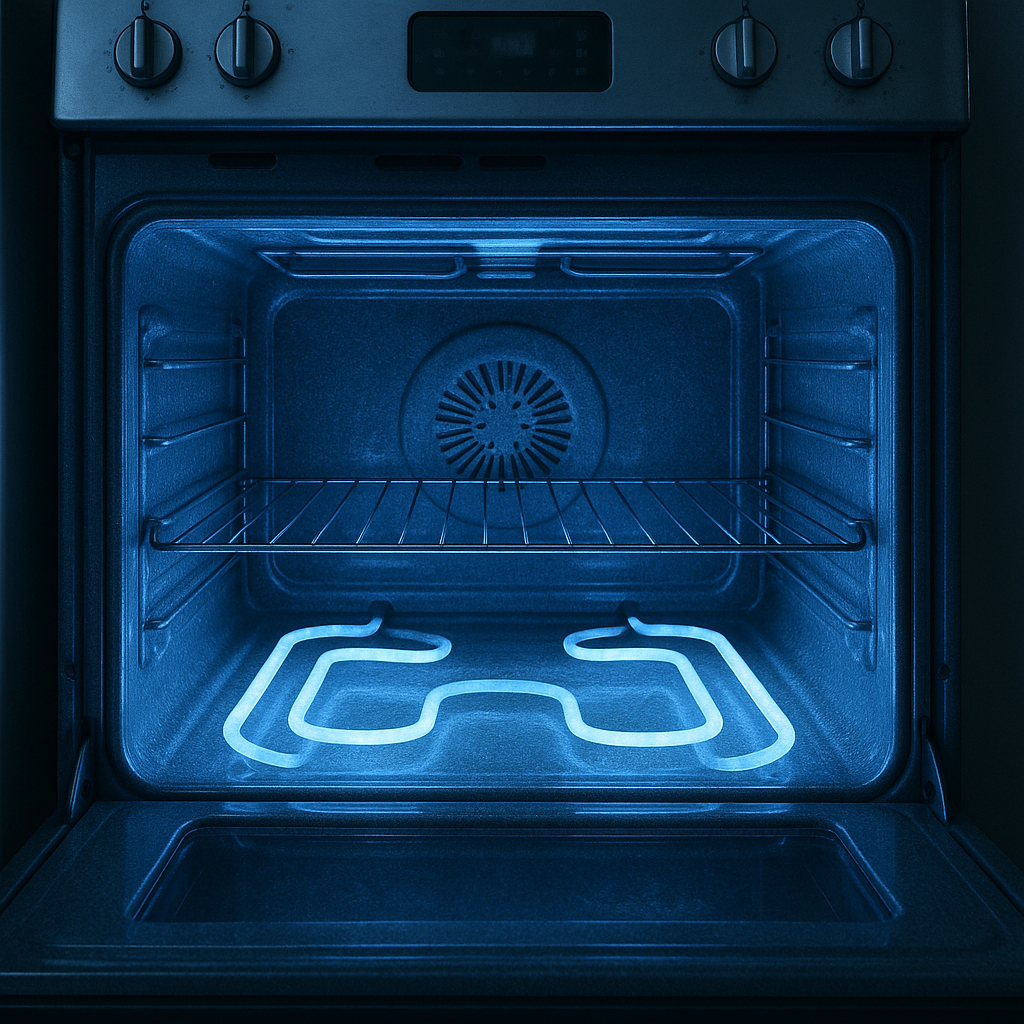
Why DIY Fixes Fall Short
It may be tempting to troubleshoot on your own—resetting breakers, swapping a part, or tightening a wire. But ovens run on high-voltage systems that require more than guesswork. A wrong move can make the problem worse or create dangerous conditions. Without the right testing equipment, you can’t confirm whether the problem is in the element, the wiring, or the circuit itself.
That’s where professional service makes the difference. At UpFix, our technicians isolate faults quickly and safely, ensuring you’re not wasting time or money on unnecessary part replacements.
Skip the trial and error — book an appointment with UpFix and get it fixed right the first time.
The UpFix Process for Heating Issues
We’ve developed a structured approach to oven repair that ensures both immediate results and long-term reliability:
-
Step 1: Full Diagnostics – We test heating elements, wiring harnesses, and circuits with advanced equipment to pinpoint the true cause.
-
Step 2: Quality Repairs – We replace damaged parts with OEM-grade components designed to handle high heat and heavy loads.
-
Step 3: Cross-Industry Insight – Our experience in multiple technical fields—from automotive to industrial—gives us unique methods for diagnosing and strengthening oven systems.
-
Step 4: Transparent Communication – We keep homeowners informed, explaining what went wrong and what we’ve done to fix it, complete with safety checks before returning the oven to use.
Case Study: When a “Simple Heating Issue” Wasn’t So Simple
A customer recently contacted UpFix about their oven, which had stopped reaching the correct temperature. They explained that meals were taking twice as long to cook, and sometimes the oven would shut off completely during preheating. At first, they assumed it was just an old thermostat or a weak heating element.
When our technicians arrived, we performed a complete diagnostic check. The heating element tested fine, but the wiring harness showed significant scorching near the terminal block. Each time the oven tried to draw full power, the weakened connection overheated and cut off current, which explained both the long cook times and mid-cycle shutoffs.
We replaced the damaged harness with OEM-grade wiring, secured the terminal block, and stress-tested the oven on a dedicated circuit. Once repaired, the oven consistently hit and held the right temperature with no interruptions.
The takeaway? Problems that appear minor on the surface—like “slow heating”—can actually signal deeper electrical faults. Without proper testing, homeowners risk replacing the wrong parts or, worse, ignoring a fire hazard.
FAQs
1. Why is my oven not heating evenly?
Uneven heating often points to a worn-out bake or broil element. It can also be caused by wiring issues that limit how much current the element receives. Professional testing can confirm whether the element needs replacement or if the problem lies deeper.
2. Can a tripped breaker be the reason my oven isn’t heating?
Yes. Breakers cut power whenever they detect overloads or faults. If your oven is on a shared or undersized circuit, the breaker may trip during use, interrupting heat. Repeated trips are a warning sign that the oven or wiring needs attention.
3. Do ovens lose heating power as they age?
They can. Heating elements naturally wear out, and wiring degrades over years of use. However, “age” is less important than maintenance—many ovens last for decades if faults are repaired quickly instead of being left to worsen.
4. Is it safe to keep using my oven if it only partially heats?
Not really. An oven that doesn’t heat properly is struggling to draw power. Continued use can damage more components or create safety risks. It’s best to stop using the oven until a technician diagnoses the issue.
5. Should I try replacing the heating element myself?
Replacing elements might look simple, but without proper testing you could misdiagnose the problem. Many “bad element” symptoms are actually wiring or circuit issues. A professional can confirm the real fault and prevent unnecessary part swaps.
6. How can I prevent oven heating problems in the future?
The best prevention is ensuring your oven has its own dedicated circuit, scheduling prompt repairs when performance declines, and avoiding DIY fixes that may hide deeper problems. Routine professional checks catch small issues before they turn into costly repairs
Still have questions? Contact UpFix — our team is ready to help you troubleshoot and fix your oven fast.
Why Choose UpFix for Oven Repairs?
When your oven stops heating, the question becomes: repair or replace? Many homeowners assume a failing oven means shopping for a new one, but that’s not always necessary. With UpFix, you save money by repairing the problem at its source instead of replacing the entire appliance.
Here’s what sets us apart:
-
Certified Expertise – Our IPC-Certified technicians accurately diagnose the real problem, so you don’t waste money replacing parts that aren’t broken.
-
OEM-Grade Parts – We use only manufacturer-quality components that extend the life of your oven, preventing the need for frequent fixes.
-
Affordable Solutions – Repairs typically cost a fraction of what you’d spend on a new oven, and we ensure you only pay for what’s truly needed.
-
Preventing Future Failures – By addressing wiring, circuits, and hidden issues, we stop recurring problems that can drain your wallet over time.
Choosing UpFix means you’re not only restoring your oven but also protecting your finances by avoiding unnecessary replacements.
Conclusion: Repair Smarter, Save More
An oven that won’t heat properly doesn’t always need to be replaced. In many cases, it’s a single component — a heating element, a wiring connection, or a circuit issue — that’s holding your appliance back. Replacing the whole oven could cost thousands, while a targeted repair from UpFix delivers the same reliable performance at a fraction of the price.
By acting quickly and trusting professionals, you save money, extend the life of your appliance, and protect your home from electrical risks. Our certified technicians not only fix the immediate issue but also ensure your oven runs efficiently for years to come.
If your oven is struggling to heat, don’t rush to buy a new one — call UpFix. We’ll help you restore performance, keep your family safe, and save money in the process.

 upfix.com
upfix.com 888-979-9343
888-979-9343
